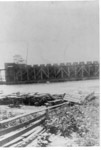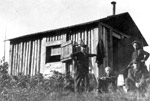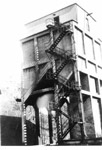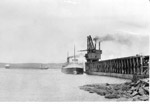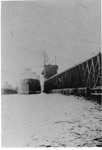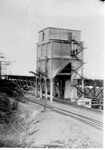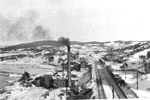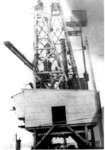Results
- View of coal terminal and trestle at Jackfish, Ontario. This 600ft trestle on Lake Superior, received steamships from the United States. Ships were unloaded manually, and usually involved a crew of tView of coal terminal and trestle at Jackfish, Ontario. This 600ft trestle …
- Black and white photo taken of the rebuilding of the coal trestle at Jackfish, Ontario c.1916.Black and white photo taken of the rebuilding of the coal trestle …
- A woman poses in front of a sheer rock face, inscribed with graffiti. The word 'Jackfish' is clearly visible.A woman poses in front of a sheer rock face, inscribed with …
- Photo of unidentified men sitting outside a forestry cabin near Jackfish Lake, Ontario.Photo of unidentified men sitting outside a forestry cabin near Jackfish Lake, …
- A view of Jackfish village, the 600ft coal dock trestle, and a steamship in the harbour of Jackfish Bay, Ontario, on Lake Superior.A view of Jackfish village, the 600ft coal dock trestle, and a …
- Black and white photo of the coal chutes at Jackfish, Ontario on Lake Superior.Black and white photo of the coal chutes at Jackfish, Ontario on …
- From the early 1900's till the mid-forties, Jackfish was the major centre for the distribution of coal in Northwestern Ontario as seen in this black and white photo. The steamships would come from thFrom the early 1900's till the mid-forties, Jackfish was the major centre …
- Black and white photo showing a large steamship unloading coal at the Jackfish coal dock, the last stop along the Canadian Pacific railway. Another large steamship appears in the background.Black and white photo showing a large steamship unloading coal at the …
- View of the coal chutes at Jackfish, Ontario. The chutes were loaded manually by a crew of 300 men. It was not unusual for them to work overtime for up to three days, until the steamship was loaded.View of the coal chutes at Jackfish, Ontario. The chutes were loaded …
- Before 1885, Jackfish was the last stop for the railroad. Jackfish coal dock was the terminal that received coal from the United States, for use in the steam powered locomotives till the 1940's. ThisBefore 1885, Jackfish was the last stop for the railroad. Jackfish coal …
- Jackfish Bridge was constructed by the CPR around 1884-85 with the last spike being driven at mileage 102.7 about three km west of Jackfish, May 16, 1885. The booming railway added to the growth of sJackfish Bridge was constructed by the CPR around 1884-85 with the last …
- An aerial view of Jackfish coal terminal located outside of Terrace Bay, Ontario. During, the 17th, 18th, and 19th centuries a heavy traffic of French and later English fur traders, past through theAn aerial view of Jackfish coal terminal located outside of Terrace Bay, …
- A view of the village of Jackfish Harbour as well as the coal chutes. This photo was taken at the end of the steam locomotive era in the late 1940's.A view of the village of Jackfish Harbour as well as the …
- Black and white photo showing coal chutes at Jackfish, Ontario. Jackfish was the terminal for coal distribution for locomotives used for the Canadian Pacific Railway during the early 1900's and ceaseBlack and white photo showing coal chutes at Jackfish, Ontario. Jackfish was …
- Black and white photo of the Frank Billings coal boat unloading coal that was used in supplying fuel for the Canadian Pacific Railway locomotives until the 1940's. The huge steamships would come in fBlack and white photo of the Frank Billings coal boat unloading coal …
- Aerial view of Jackfish harbour and development of the coal terminal at Jackfish harbour after the age of steam locomotives ~1950.Aerial view of Jackfish harbour and development of the coal terminal at …
- Jackfish Coal Dock wooden tower in the process of being rebuilt by crew in 1919. This coal dock was blown over in a storm on Lake Superior, March, 1919.Jackfish Coal Dock wooden tower in the process of being rebuilt by …
- A winter view of Jackfish from the past with home in foreground and coal docks in the background.A winter view of Jackfish from the past with home in foreground …






